Northern Pakistan: Where Nature Both Humble and Awakens You
Sometimes nature makes you feel small. Other times, it makes you feel more alive than ever. In the mystical north of Pakistan, both things happen at once. Among the towering peaks of the Karakoram, you’re humbled by mountains that rise like walls into the sky, yet the serene silence, the fresh air, and the sheer beauty of the nature ignite something in you that feels more awake than anything back home.
At the heart of this northern wonderland lie Hunza and Skardu, two sides of the same coin, both strongholds of the North, both unmatched in beauty, yet each carrying a different soul. One welcomes you with its charm and accessibility; the other challenges you with its wilderness and grandeur.
Together, these valleys also carry centuries of culture — Hunza with its Ismaili roots, warm hospitality, and emphasis on education; Skardu with its Tibetan-influenced traditions, significant ties to Baltistan’s history, and the same fierceness for education. For travellers, this means not just sights to observe, but communities to step into.
But which should you step into first? In the sections ahead, we’ll weigh their landscapes, cultures, and experiences, so by the end, you’ll know where your adventure should begin.
Landscapes of Hunza
Karimabad: Forts and Culture
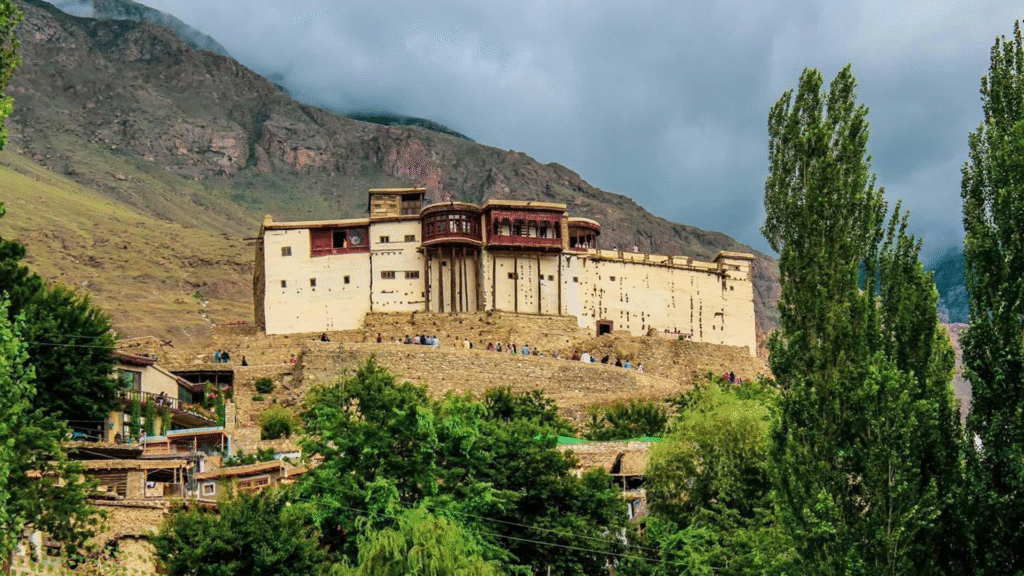
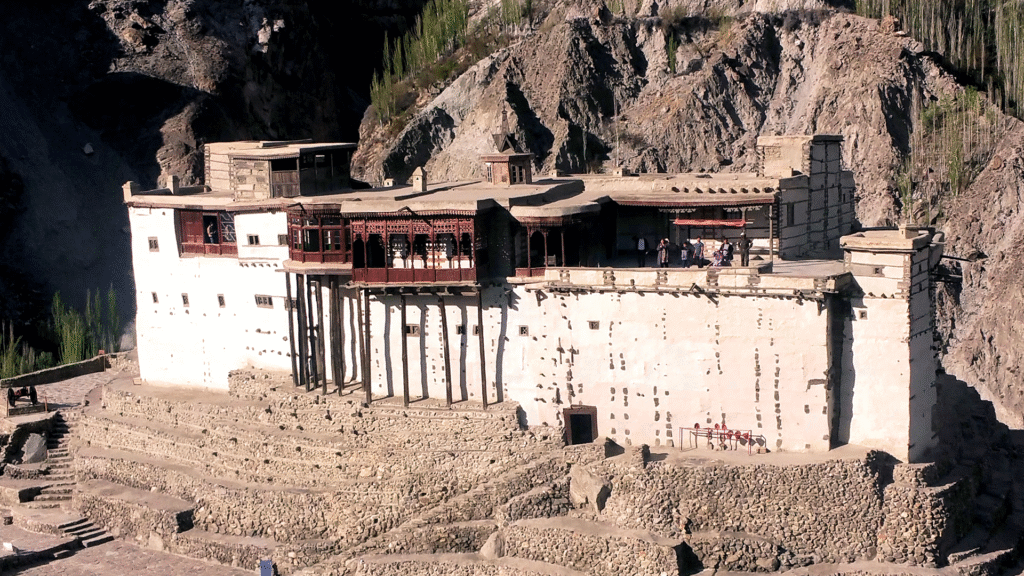
Hunza sits cradled in the Karakoram, a valley that has become the symbol of Pakistan’s northern beauty. At its heart lies Karimabad, where the centuries-old Altit and Baltit Forts overlook the town. Once the seats of Hunza’s rulers, these forts now stand as living monuments, their stone walls etched with stories of power and survival in the high mountains.
Visitors can walk through the wooden balconies of the forts, enjoy the view of the mountains, and explore small cafés tucked into Karimabad’s winding lanes. Or they can explore the bustling local bazaars, where handicraft shops sell embroidered caps, Pashmina shawls, and handwoven rugs.
Rakaposhi: The Mother of Mist
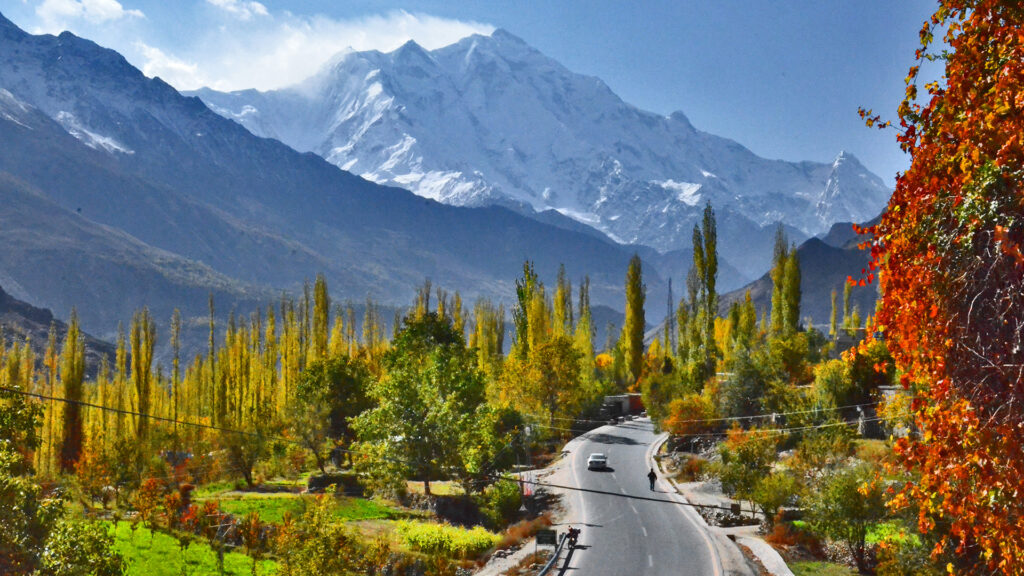
Watching over all of Karimabad is Rakaposhi (7,788 m), known as the “Mother of Mist” for the way clouds cling to her white slopes. Unlike K2, which hides deep in the wild, Rakaposhi is ever-present, visible directly from the Karakoram Highway and from village courtyards. In the morning light, its walls of snow gleam blindingly white, and at dusk, they turn a pale pink. All the while, it towers over the bustling town, as if it were a silent observer of life below.
The open nature of the mountain means that trekkers can venture onto Rakaposhi Base Camp with just a moderate hike starting outside Karimabad, offering up-close views of the mountain without the challenges of bigger expeditions.
Attabad Lake: Beauty Born from Tragedy
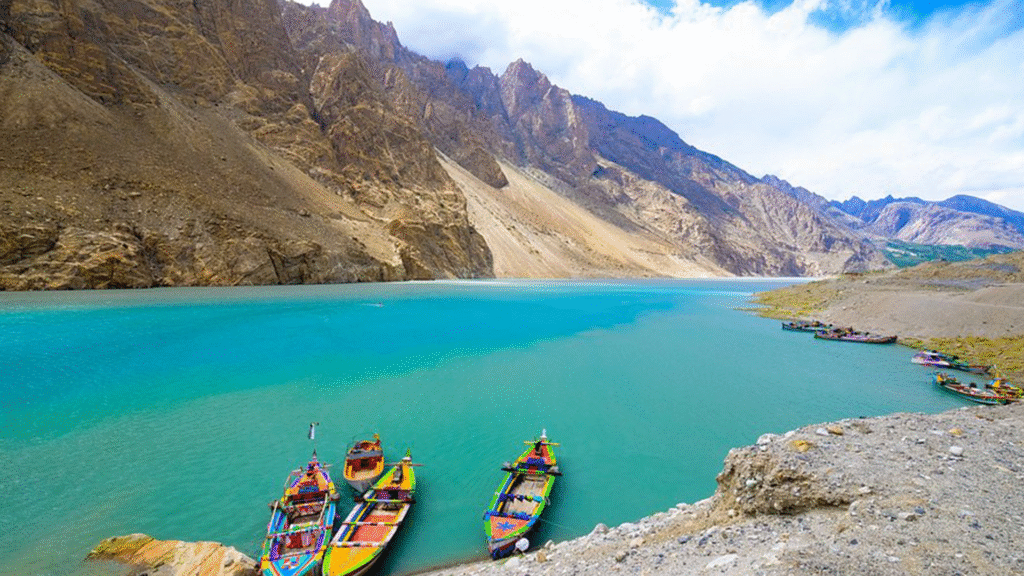
Further along the valley lies Attabad Lake, a place born of catastrophe. In 2010, a massive landslide buried villages and blocked the Hunza River. This tragedy, however, birthed a turquoise lake stretching over 20 kilometres. Today, its waters are alive with boats, jet skis, and rafts crossing between dramatic cliff faces.
Travelers often pair their boat rides with a meal at lakeside resorts, where grilled trout and apricot dishes are specialties. Kayaking and paddleboarding are also options for those wanting something quieter than speedboats.
Seasons and Life in Hunza
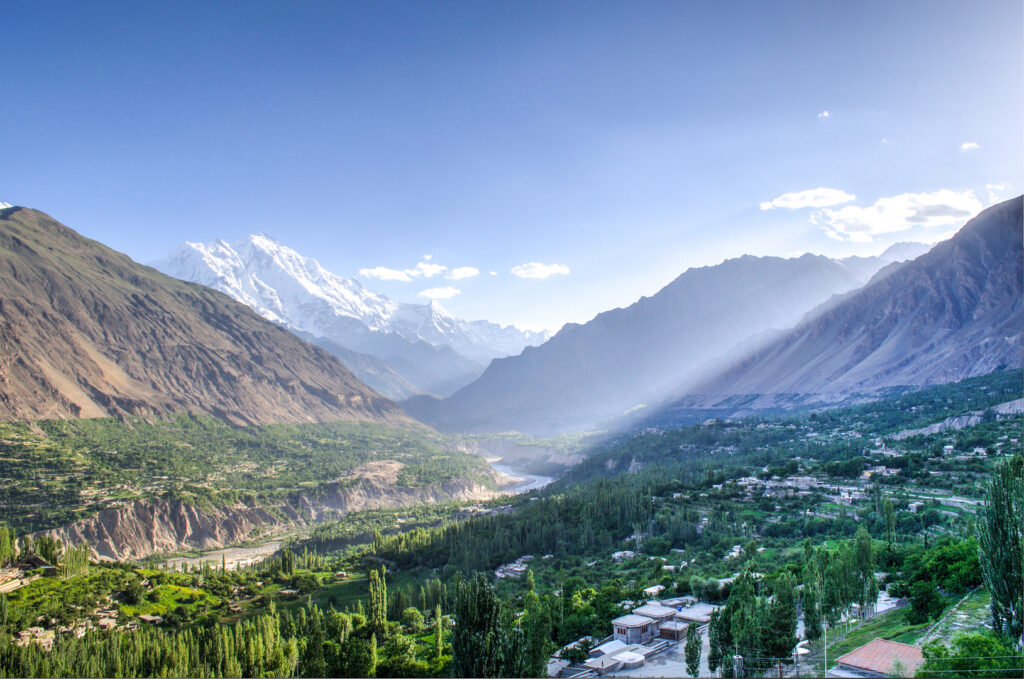
What makes Hunza’s landscapes feel intimate is not just the mountains or the lakes, but the life between them. In spring, the valley erupts in apricot and cherry blossoms, whole orchards glowing white and pink. Summer brings green pastures filled with goats and yaks, while autumn transforms the terraces into a blaze of red and gold.
The people of Hunza — among the most literate communities in Pakistan — tend their fields, run small shops, and welcome travelers with quiet pride. Hunza and its people, the Burusho, speak of a heritage that has adapted to the mountains over centuries. Festivals in spring and autumn bring music, dance, and rituals that visitors can experience firsthand.
Hunza doesn’t overwhelm; it embraces. It gives you the scale of the Karakoram while letting you step into the rhythms of everyday life, where the extraordinary and the ordinary blend seamlessly.
Landscapes of Skardu
Skardu: The Gateway to Adventure
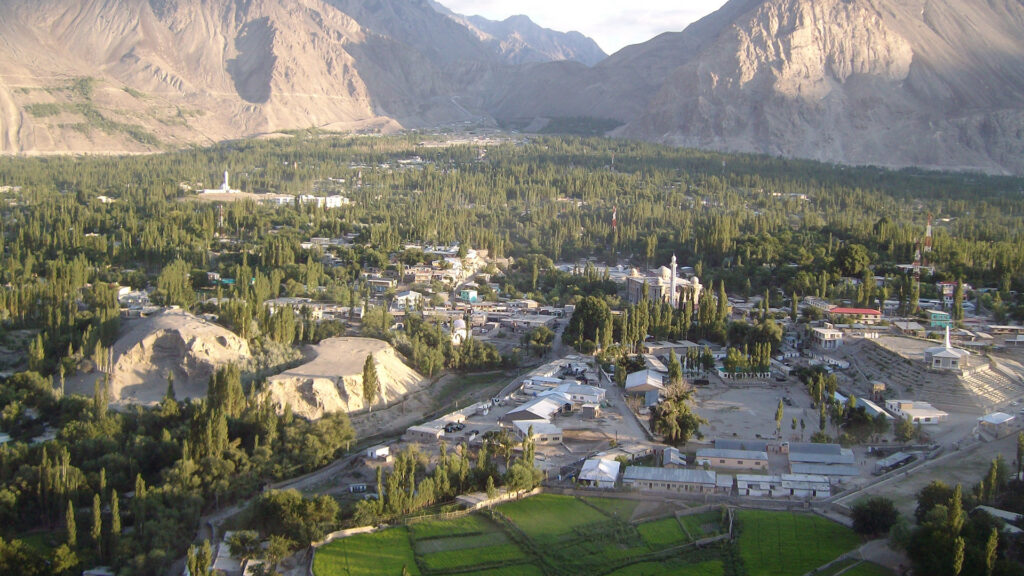
If Hunza is the quiet comfort of The Shire, then Skardu is the beginning of Bilbo’s adventure. Where Hunza gathers life into one sheltered valley, Skardu spreads it wide — deserts, lakes, rivers, and mountains pulling in different directions. The town itself sits at the center of it all, a resting place between journeys: strong enough to shelter you, yet open enough to remind you that beyond its edge lies a world that grows wilder with every mile.
Culture and Cuisine
Skardu’s culture reflects this openness. The Balti people, with roots tied to both Tibetan and Central Asian traditions, keep their heritage alive through music, polo and football matches, and warm hospitality. Their food, which ranges from hearty apricot soups and momo dumplings to yak kebabs, tells the story of diversity in the rugged lands. Visitors often find themselves invited into homes for a shared meal or drawn into bazaars buzzing with traders, where handcrafted pattu shawls and carved wooden goods offer souvenirs as enduring as the mountains themselves.
Skardu Forts and Town Life
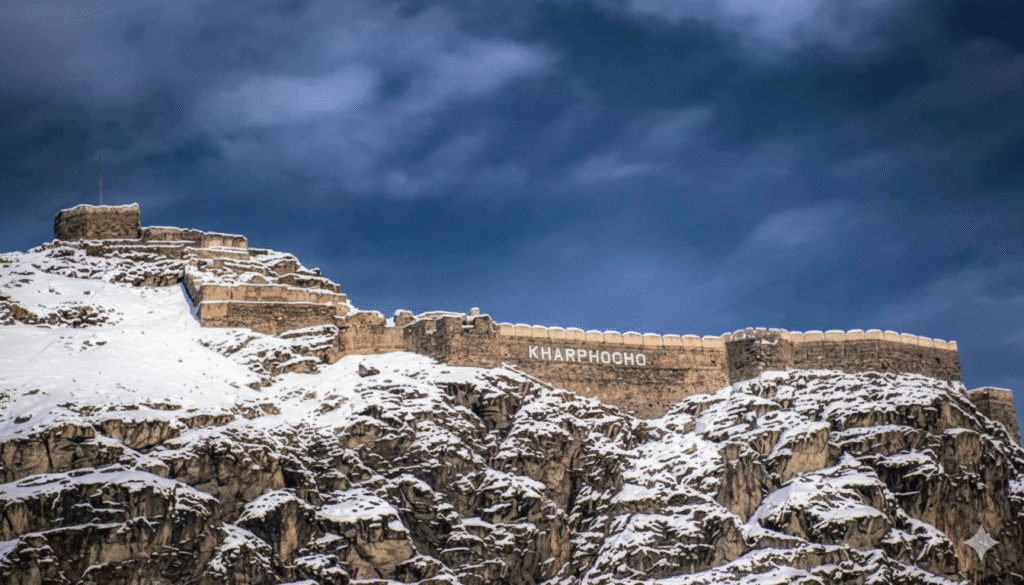
The town of Skardu rests along the mighty Indus River, which runs the length of Pakistan. High on a rugged ridge stands Kharpocho Fort, the stronghold that once played a decisive role in the liberation of Baltistan, still watching over the valley. Below it, life moves in its own rhythm: apricot orchards bloom in summer, fields stretch toward harvest, and open grounds echo with elders playing polo while the youth prefer football.
Travelers can explore bazaars, sip salted butter tea at roadside cafés, or join in sporting events alongside locals.
Lakes, Desert, and Plateaus
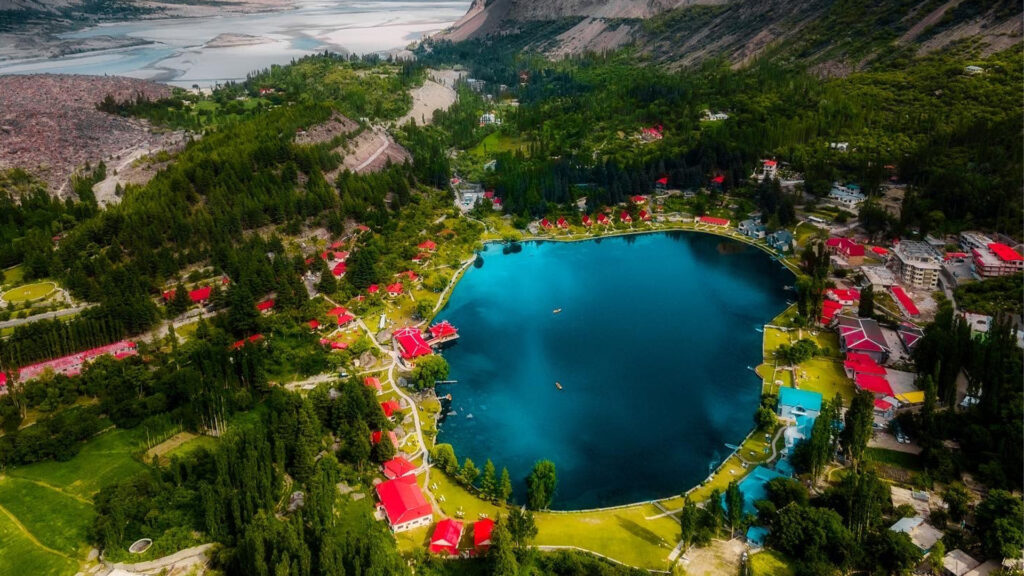
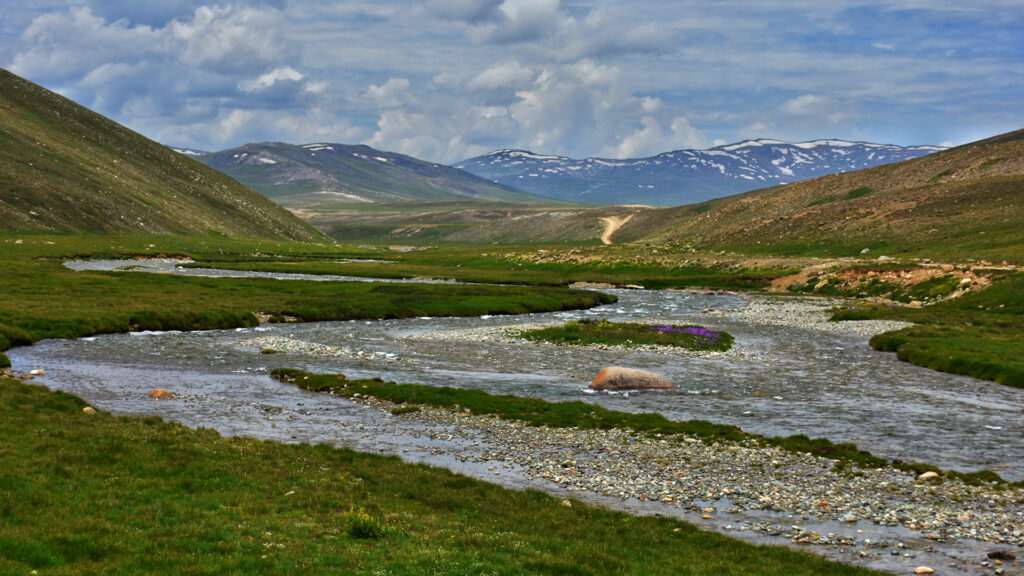
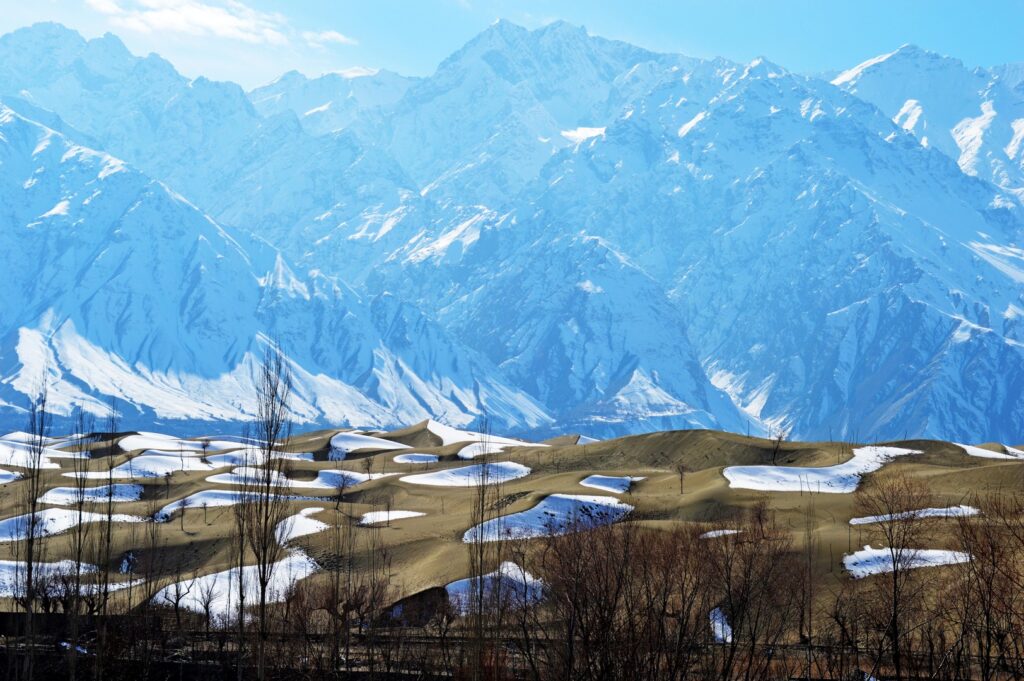
Towards the west lie the twin Kachura Lakes: Lower Kachura (Shangrila) with its resort gardens and Tibetan-inspired cottages, and Upper Kachura offering a wilder escape. South of town lies the Katpana Desert, where pale dunes rise against snowy mountains — an arena for paragliding, parachuting, and surreal winter mornings.
To the east, the vast Deosai Plateau, “The Lands of Giants,” stretches like an endless ocean of grass. Summer brings wildflowers and camping opportunities, while winter turns it into a frozen, silent wilderness under the Milky Way.
Treks and The Mighty K2
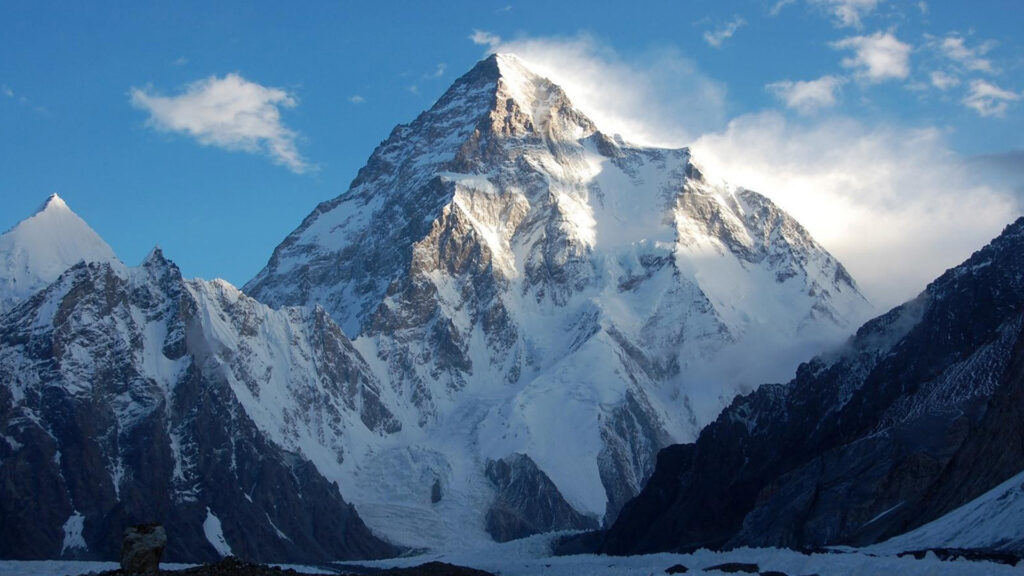
The valleys of Shigar and Khaplu offer stone villages, historic forts, and trekking gateways into the Karakoram. Shigar Fort has been restored into a boutique hotel, while Khaplu Palace showcases centuries-old architecture. And of course, there is Skardu’s crown jewel: K2, the “Savage Mountain,” whose sheer presence humbles even those who never set foot on its slopes.
Hunza or Skardu: Which Should You See First?
As the Karakoram stretches across northern Pakistan, Hunza and Skardu offer two very different ways to meet it. Hunza is the quiet valley; Skardu is the wild frontier.If you crave a valley that feels comfortable yet shows you the scale of the mountains, start in Hunza. If your heart yearns for wide-open adventure, diverse landscapes, and the thrill of standing at the edge of the impossible, make Skardu your first stop. Or, better yet, experience both. Hunza to view the awe of the Karakoram, and Skardu to be swept away by its grandeur. Together, they show the North in full spectrum — from the quiet comfort of a valley to the wild call of the high mountain.


